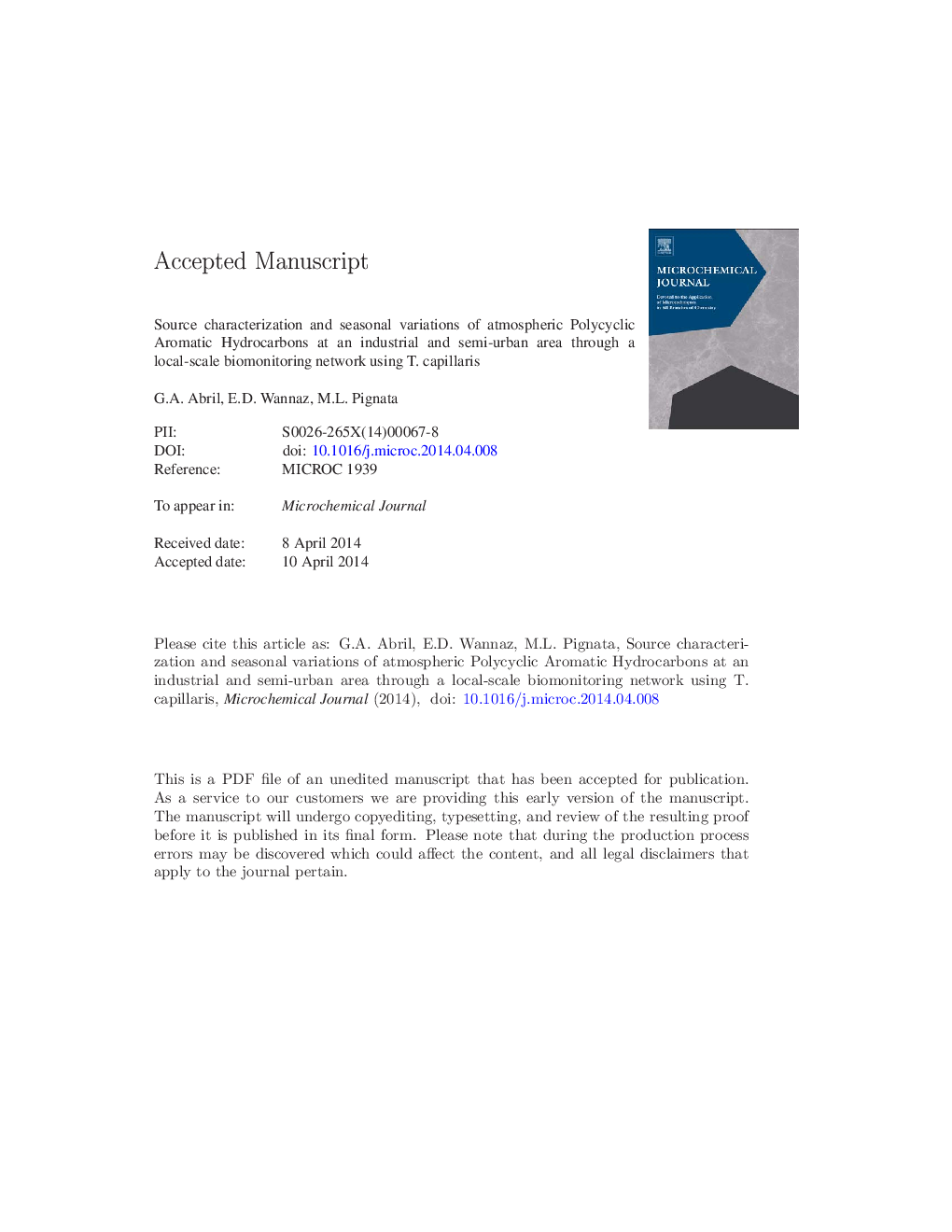| Article ID | Journal | Published Year | Pages | File Type |
|---|---|---|---|---|
| 7642894 | Microchemical Journal | 2014 | 32 Pages |
Abstract
Designing a network of instrumental monitoring to obtain polycyclic aromatic hydrocarbon (PAH) concentration data at many sampling sites simultaneously is difficult due to the high cost of equipment and the problem of identifying suitable sites for installation. The use of biomonitors allows accurate approximations of air pollution, covering different working scales and levels of complexity, based on the number of individuals collected or transplanted. A monitoring network, consisting of biomonitors of Tillandsia capillaris transplanted for four seasons, was designed in order to assess the effects of different emission sources and the atmospheric dispersion of PAHs at a local scale, in the town of Malagueño, Argentina. Out of the sixteen priority control PAHs listed by the United States Environmental Protection Agency (USEPA) for their mutagenic and carcinogenic properties, thirteen of them were analyzed in this study. In addition, several physiological parameters were quantified in order to try to relate the damage in the transplanted biomonitors with the air quality in the sector. The biomonitoring study allowed the spatial (in 300Â km2) and temporal (over one year) variabilities in the concentrations of the PAHs emitted from multiple sources in a complex scenario to be assessed, thereby identifying marker elements from the emissions of a cement plant, biomass burning and traffic. The present study represents a different approach for analyzing the behavior of sources of emission of PAHs in space and time, and the results obtained can be compared with related sources from other regions of the world.
Related Topics
Physical Sciences and Engineering
Chemistry
Analytical Chemistry
Authors
G.A. Abril, E.D. Wannaz, M.L. Pignata,
